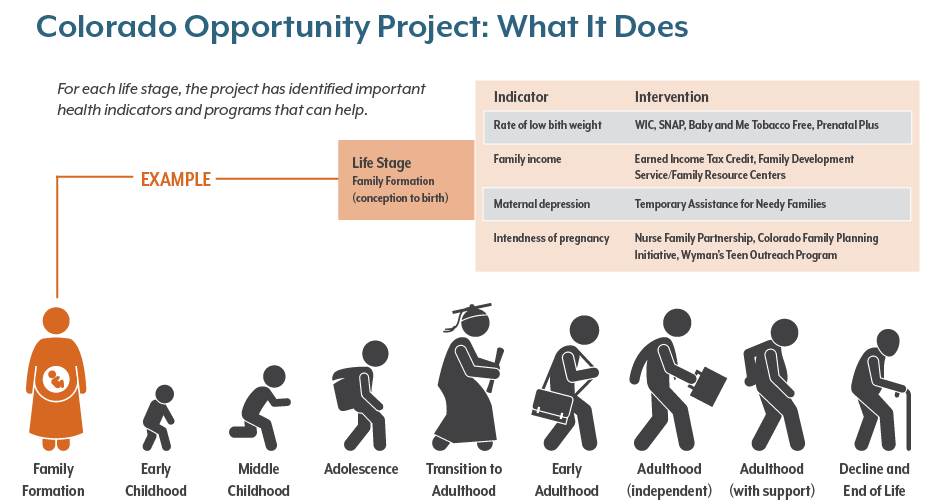Health experts have long recognized the importance of factors outside the clinic that impact a person’s health and well-being. Food security, opportunities to exercise, and good jobs are all part of the social determinants of health. And even small communities usually have groups that work to improve these areas.
But connecting patients of medical care providers with community social resources isn’t always easy.
The July SNAC Lab looked at two relatively new Colorado workforces that seek to make these connections: Opportunity Liaisons and Regional Health Connectors.
Opportunity Liaisons: Picking the Right Program
Several state agencies are members of the Colorado Opportunity Project, an effort to identify and remove barriers to well-being at every stage of life.
Kathy Orr, the Opportunity Liaison for El Paso, Teller, Park and Elbert counties, discussed the work.
Members of the project’s steering committee began by looking at each life stage, from birth through old age, to identify indicators that matter most and the interventions most likely to make a positive change. For example, indicators of health during the family formation life stage include unintended pregnancies, low birth weight, maternal depression and family income. Opportunity Liaisons can connect families with evidence-based interventions, such as the Women Infant Children program, the Colorado Family Planning Initiative, Temporary Assistance for Needy Families and various family resource centers.
Regional Care Collaborative Organizations (RCCOs) will take over the Opportunity Project, Orr said, and local projects will take different approaches. Although the RCCOs are part of Medicaid’s Accountable Care Collaborative, several state agencies participate in the Opportunity Project, including the Colorado departments of Human Services, Labor and Employment, and Public Health and Environment.
The project aims to get agency workers to think differently about the value of the state’s many resources. Several programs work toward the same goals, but different ones might work best for different families.
The initiative holds promise, yet it’s hard to find data to measure its effectiveness, Orr said.
“What we learned is it’s super complicated,” Orr said.

